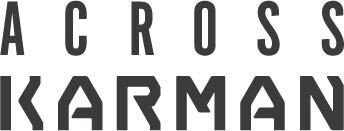Reimagining Warfare: The Rise of Unmanned Aerial Vehicles
In this episode of the Need to Know, host John Milewski explores the evolving landscape of warfare shaped by unmanned aerial vehicles (UAV) with his guest, Dr. Jack Watling. Dr. Watling is a Wilson Center Global Fellow and senior research fellow at the Royal United Services Institute. They discuss a new study, co-authored by Jack, that focuses on the impact of UAVs on land forces, drawing insights from contemporary conflicts like the one in Ukraine. From precision strikes to procurement challenges, this discussion navigates the complexities of adapting military strategies to technological advancements. It also provides valuable information for lawmakers who will be making funding decisions on weapons systems that are changing the way wars are conducted.
Takeaways:
These takeaways highlight the complex challenges and opportunities presented by the increased use of UAVs in modern warfare.
- Rapid Evolution of Warfare: The increased use of UAVs (unmanned aerial vehicles or drones) is fundamentally changing the landscape of warfare. It allows for precision strikes at an unprecedented scale, which affects how land forces protect themselves, maneuver, and deploy against adversaries.
- Complementary Capabilities: UAVs do not replace legacy strike systems like artillery but complement them. They can provide precise coordinates and adjust fire, making legacy artillery more responsive and precise. However, the combination of UAVs and legacy artillery poses new challenges for defenders.
- Challenges in Procurement: The current procurement processes are not conducive to the rapid updating and alteration of capabilities necessary for modern warfare. There's a need to reform procurement to ensure that soldiers have the equipment they need at the required speed.
- Specialist Skill Set: Operating UAVs requires a specialist skill set beyond just piloting the platform. Operators need to understand how to maximize the capabilities of UAVs effectively.
- Mission Prioritization: With the ability to conduct deep strikes more efficiently, there's a need for ruthless prioritization of missions to ensure cost-effectiveness and efficiency.
- Regulatory and Economic Considerations: Regulatory barriers and economic factors significantly impact the development and deployment of UAVs. Finding the right balance between safety, cost-effectiveness, and innovation is crucial.
- Forward Thinking and Preparedness: While some countries like the UK and the US are making strides in rethinking warfare with UAVs, there's a need for collaboration between legislators, military, and industry to adapt quickly to the changing landscape.
- Flexibility and Agility:The procurement process needs to be flexible and agile to meet the evolving needs of modern warfare. Collaboration between lawmakers and military entities is essential to ensure the best return on investment and preparedness for future conflicts.

Global Europe Program
The Global Europe Program is focused on Europe’s capabilities, and how it engages on critical global issues. We investigate European approaches to critical global issues. We examine Europe’s relations with Russia and Eurasia, China and the Indo-Pacific, the Middle East and Africa. Our initiatives include “Ukraine in Europe” – an examination of what it will take to make Ukraine’s European future a reality. But we also examine the role of NATO, the European Union and the OSCE, Europe’s energy security, transatlantic trade disputes, and challenges to democracy. The Global Europe Program’s staff, scholars-in-residence, and Global Fellows participate in seminars, policy study groups, and international conferences to provide analytical recommendations to policy makers and the media. Read more







